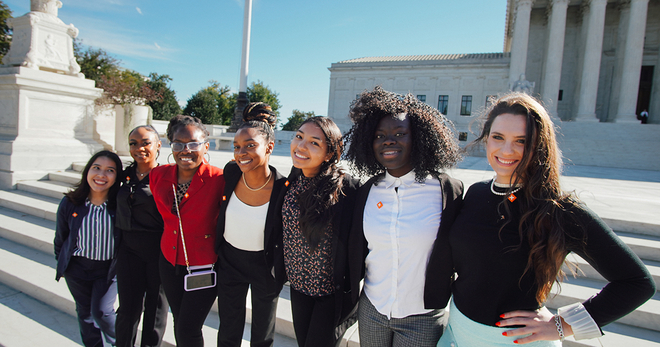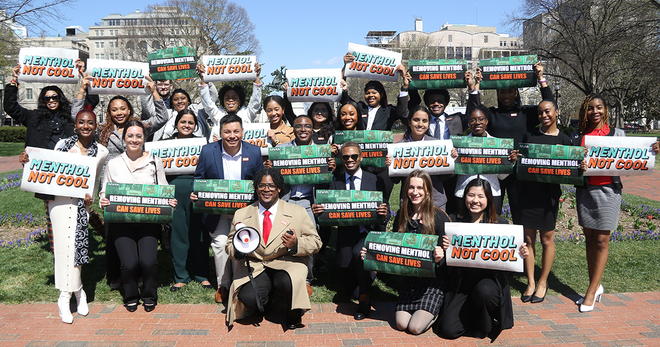A decade of the Tobacco Control Act: Where are we now?
The 2009 Family Smoking Prevention and Tobacco Control Act granted the Food and Drug Administration the authority to regulate tobacco products and put in place important measures to protect public health.
As we mark 10 years since its passage on June 21, here is a look at its accomplishments, as well as the critical gaps remaining that have allowed the youth e-cigarette use epidemic to happen and tobacco use to stay the leading cause of preventable disease and death in the country.
What the Tobacco Control Act accomplished
What is the Tobacco Control Act
In addition to bringing all tobacco products — including e-cigarettes, pipe tobacco, hookah and cigars – under FDA authority, the law:
- Set up the Center for Tobacco Products, which handles the regulation of tobacco products;
- Worked with states to develop a retail enforcement program that has conducted more than 1 million inspections and issued 81,750 warning letters as of March 2019;
- Launched “The Real Cost,” a tobacco use prevention campaign aimed at youth aged 11 to 18, which has prevented 350,000 teens from smoking between 2014 and 2016 and saved $31 billion in smoking-related costs;
- Established Tobacco Centers of Regulatory Science (TCORS) to research various aspects of tobacco use to inform tobacco regulation;
- Granted the FDA the authority to regulate some of the industry’s sale, distribution and marketing practices. These rules, set in “deeming” regulation released in 2016, included banning the use of vending machines and product sampling (except in adult-only facilities), restricting the sale of tobacco in retail establishments to face-to-face transactions between retailers and consumers, and expanding the existing limits on tobacco brand sponsorships and tobacco branding of non-tobacco items.
What the FDA still has left to do
What is not covered under the Tobacco Control Act
The protections extended under the Tobacco Control Act are important, but they are also not enough. The FDA has not exercised its full authority to regulate tobacco products and has also not taken needed actions to protect public health from tobacco products. Here are some of the things we need from the agency:
- Remove menthol and other flavors from tobacco products. While flavors, except for menthol, are not allowed in cigarettes, other tobacco products are still allowed to be flavored. Flavors in tobacco products attract youth. Menthol in cigarettes has been shown to not only attract youth but may facilitate dependence on cigarettes and make it harder to quit. The FDA has issued reports and requested comments from the public, and more recently said that it is considering taking action by issuing product standards to remove flavors but has yet to do so.
- Fully review all tobacco products it now has the authority to regulate, such as e-cigarettes and cigars. While some regulations are in place, these products have still not undergone a review of their public health impact through the agency’s review process for tobacco products. The failure to review these products and let e-cigarettes remain on the market largely unchecked has allowed the youth vaping epidemic to happen.
- Issue regulations requiring graphic warning labels for cigarettes. While the FDA did initially issue a regulation requiring graphic warning labels, those specific warning labels were struck down by the courts. The FDA has yet to issue new ones.
- Issue product standards to reduce the nicotine in combustible tobacco to non-addictive levels. The FDA has said that they will issue such a product standard, but it has yet to do so.
- Establish a track and trace system for tobacco products to ensure that we can follow tobacco products from the manufacturer to the store. This helps ensure the integrity of the supply chain, deter illicit trade and help with enforcement of tobacco control measures.
Truth Initiative® has repeatedly called on the FDA to take these actions. Most recently, in May 2019, Truth Initiative and other public health and medical organizations experienced a victory when a federal judge ruled that, in August 2017, the FDA acted illegally by allowing e-cigarettes to remain on the market until 2022 before applying for FDA authorization and by permitting products to remain on the market indefinitely during review. Our lawsuit argued the FDA’s decision was unlawful, put kids at risk and harmed public health. The FDA’s delay allowed e-cigarettes — including candy, fruit, mint and menthol-flavored products that clearly appeal to kids — to stay on the market for years without a review of their public health impact.
More in tobacco prevention efforts
Want support quitting? Join EX Program
By clicking JOIN, you agree to the Terms, Text Message Terms and Privacy Policy.
Msg&Data rates may apply; msgs are automated.



